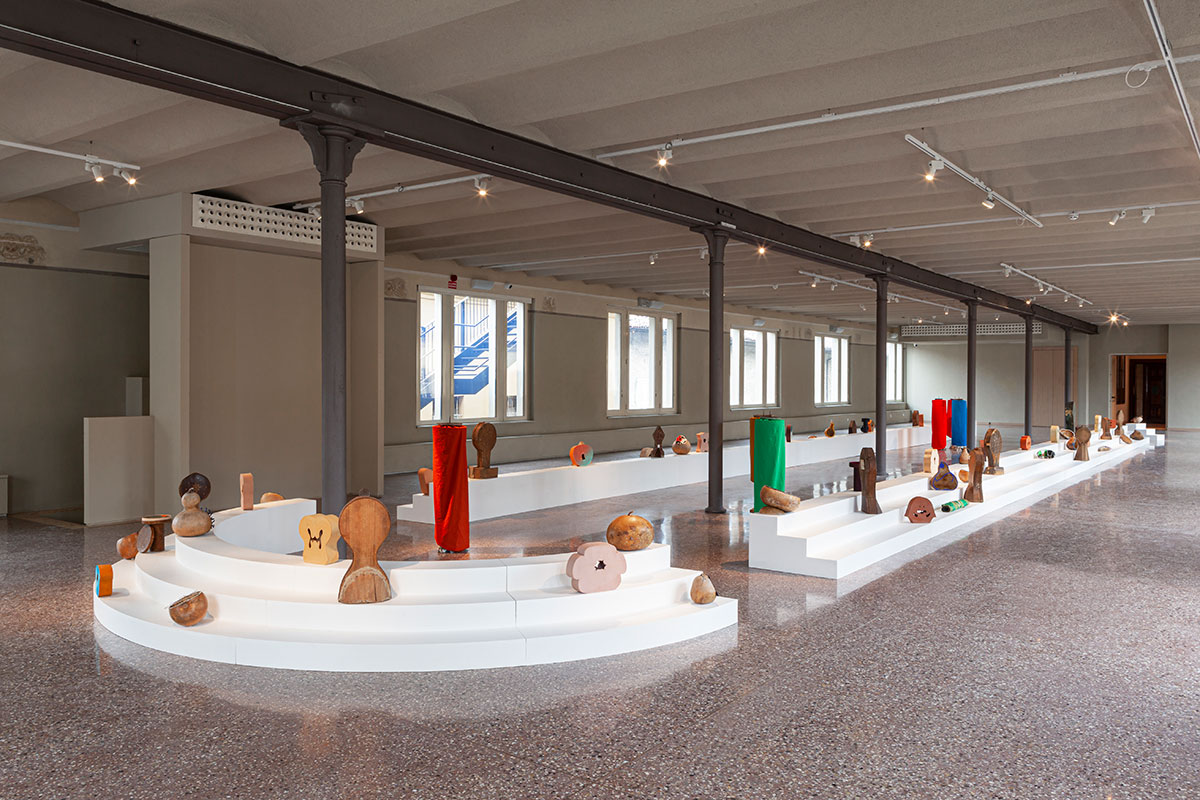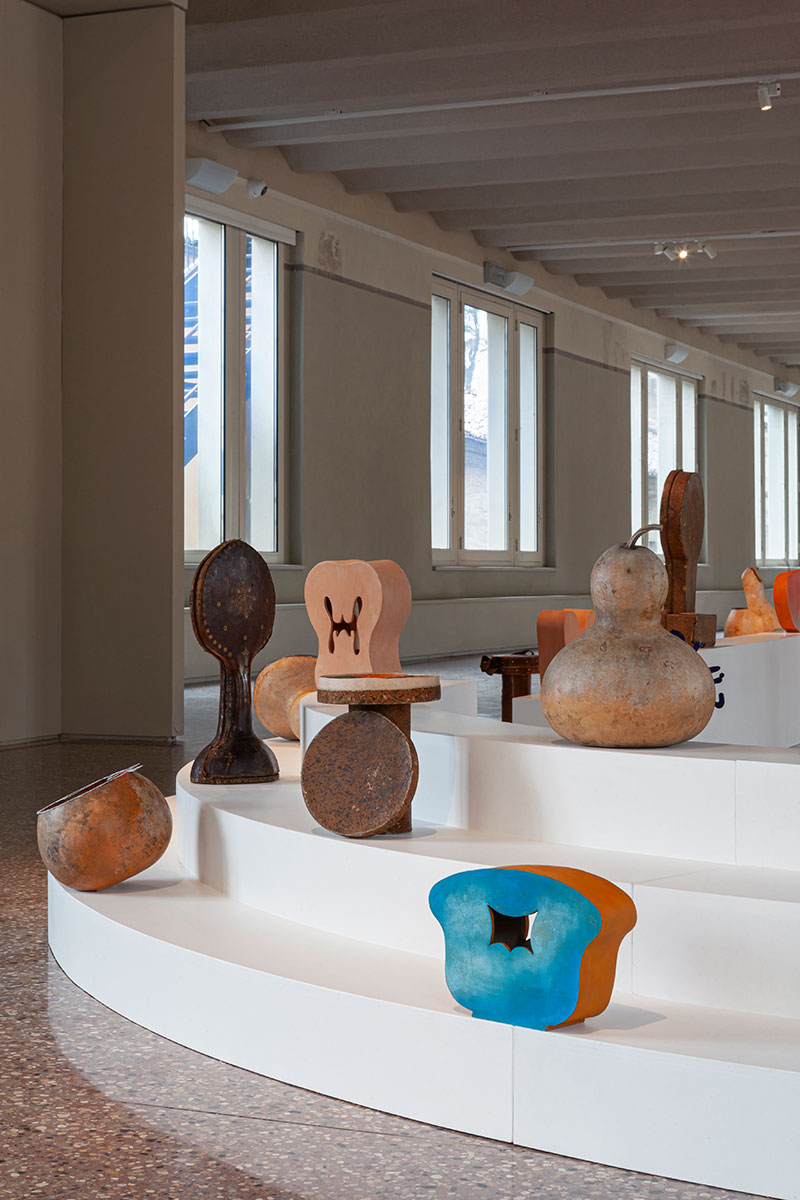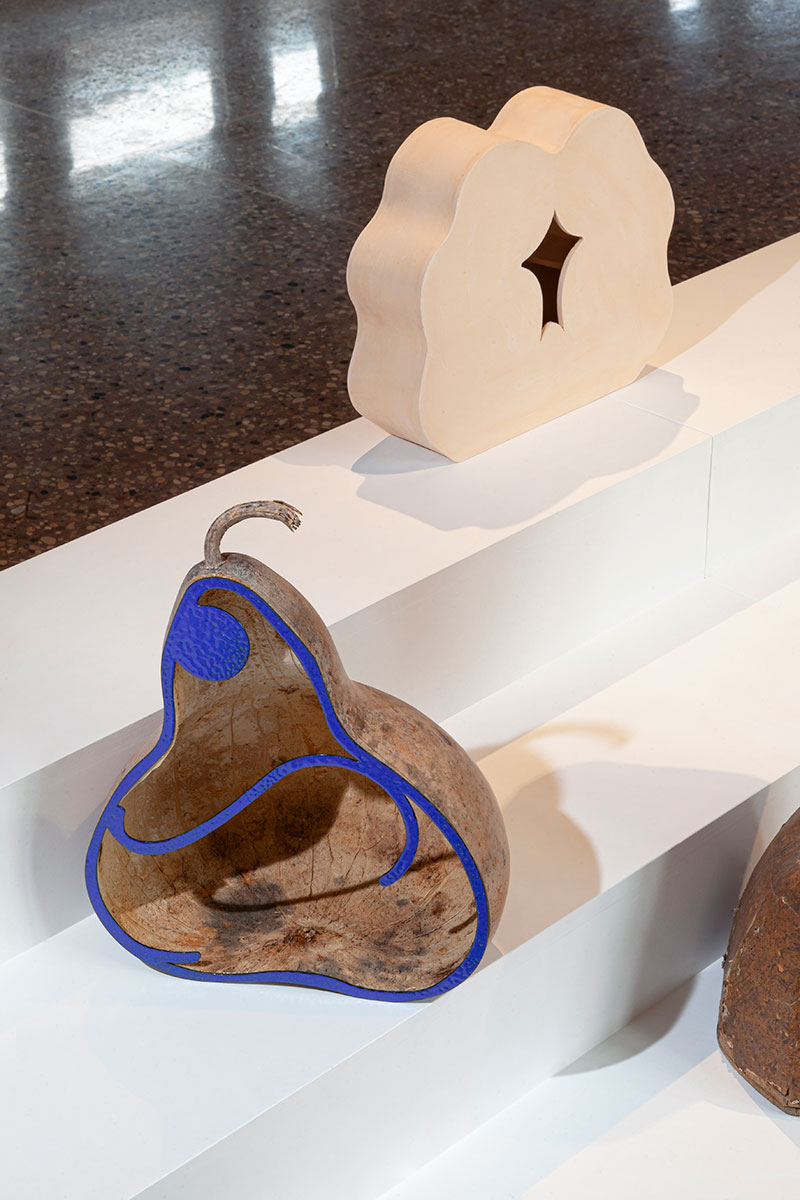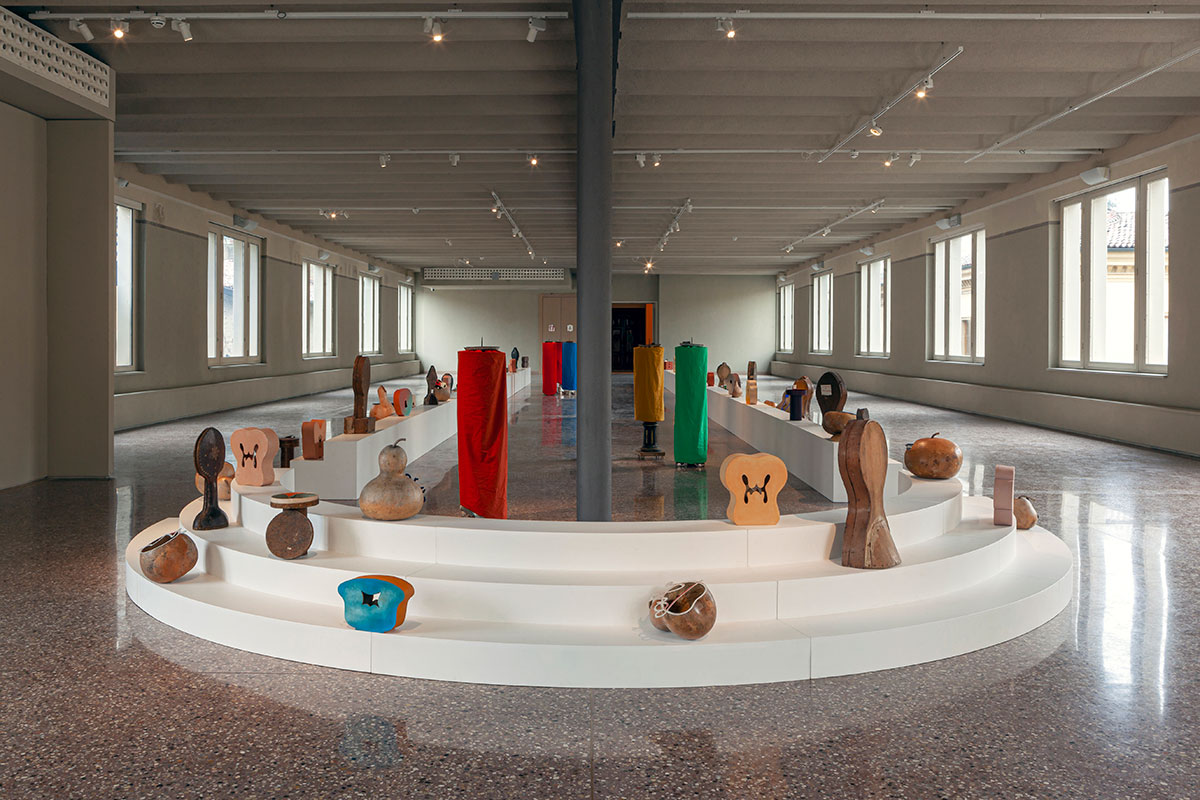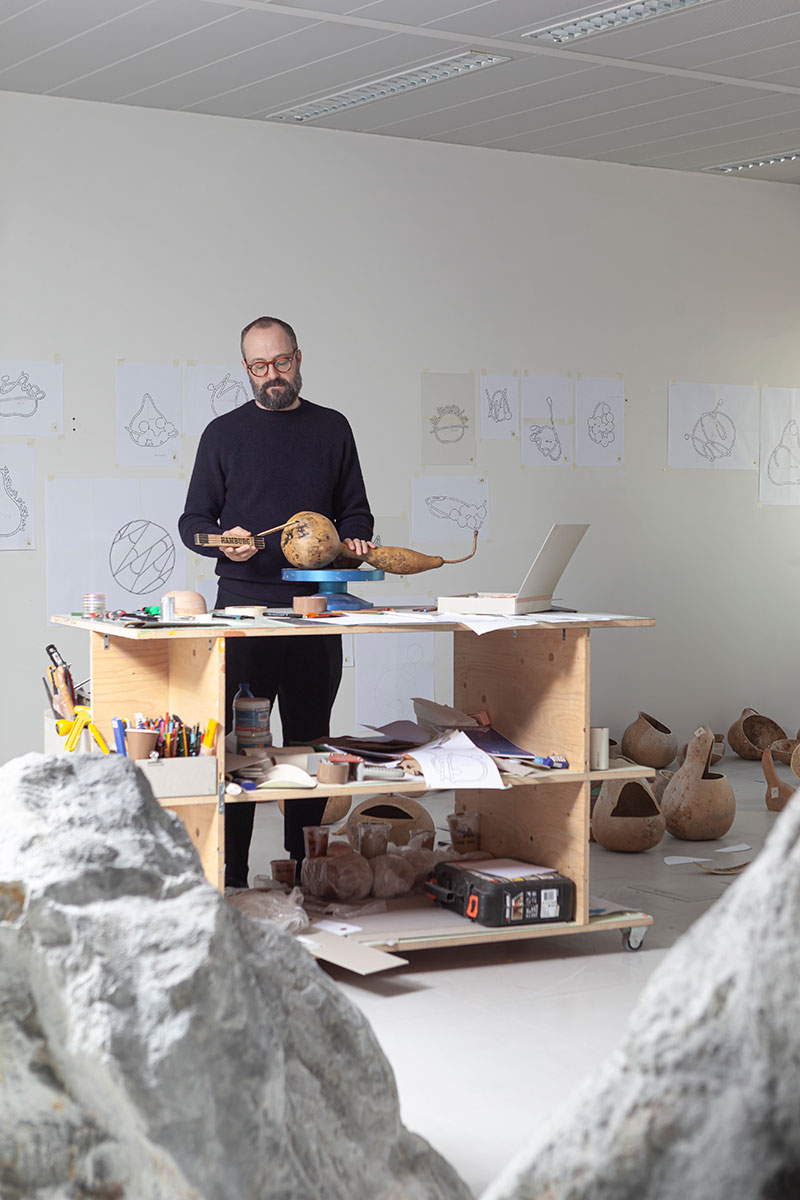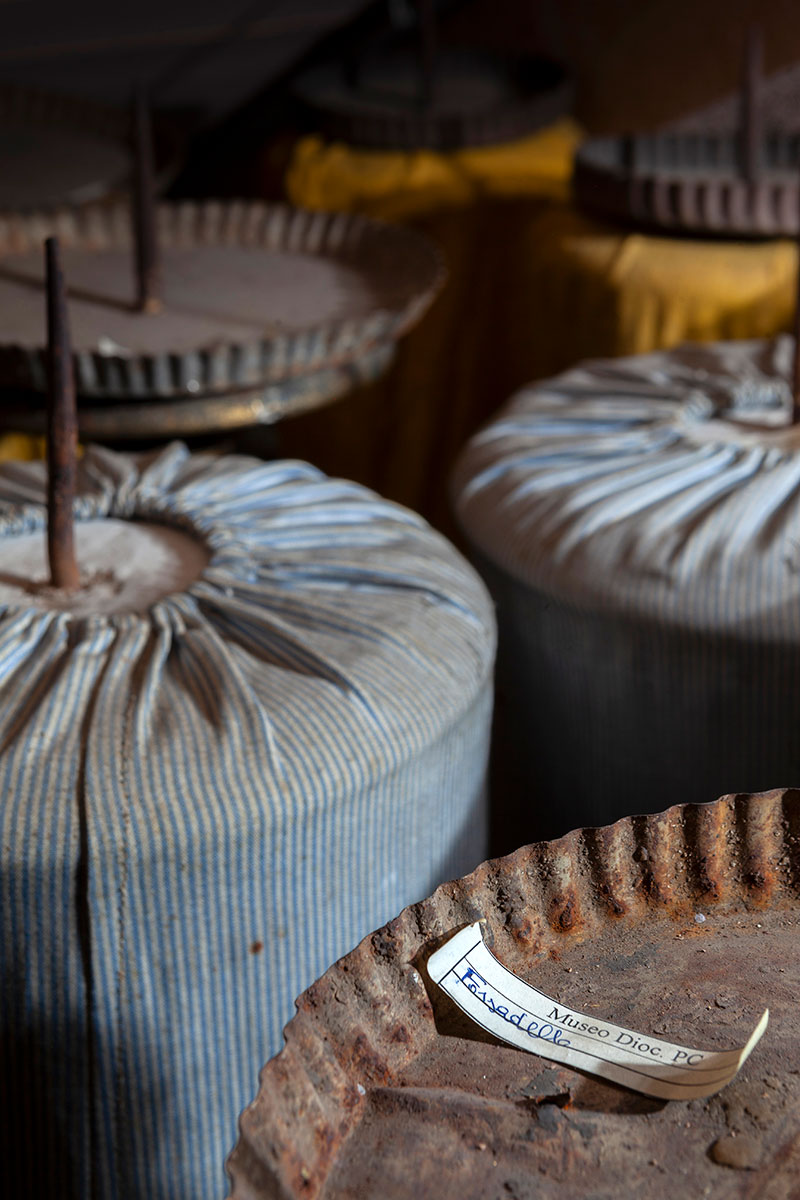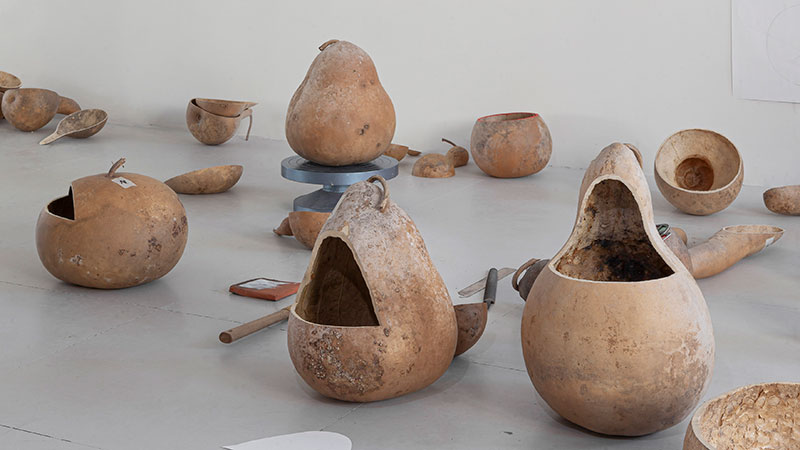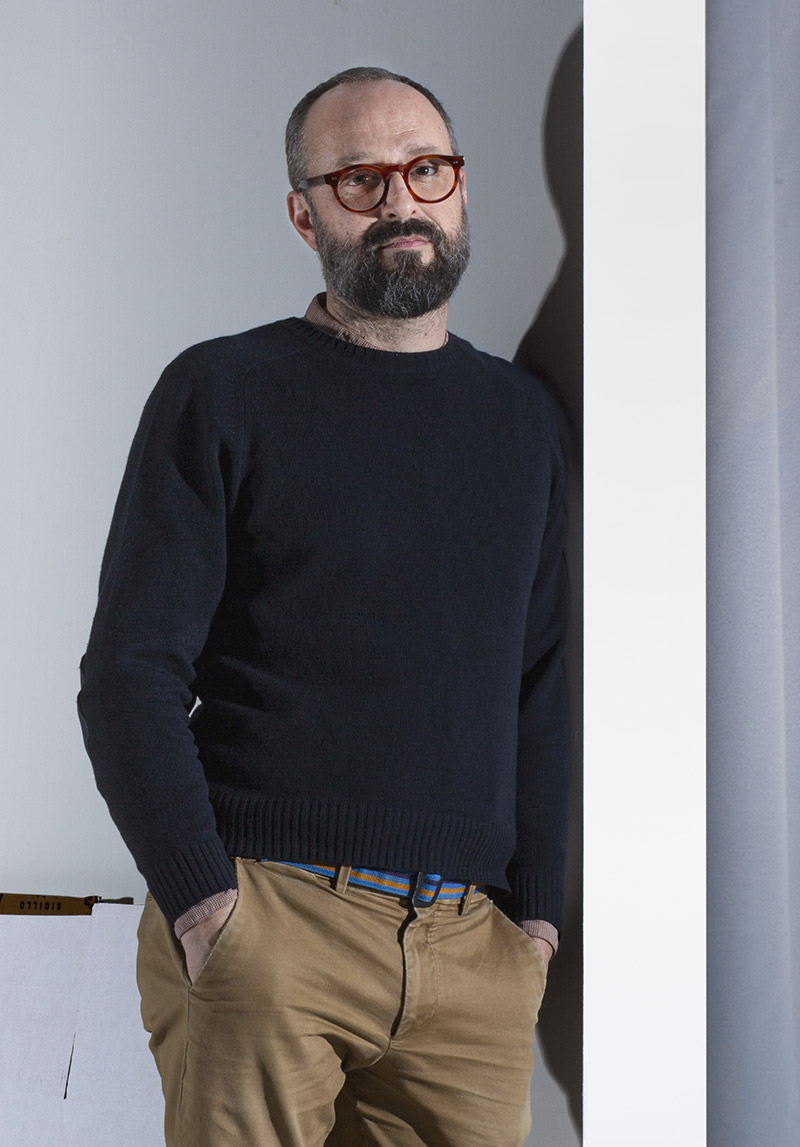Sul Guardare. Atto 3 – Andrea Sala
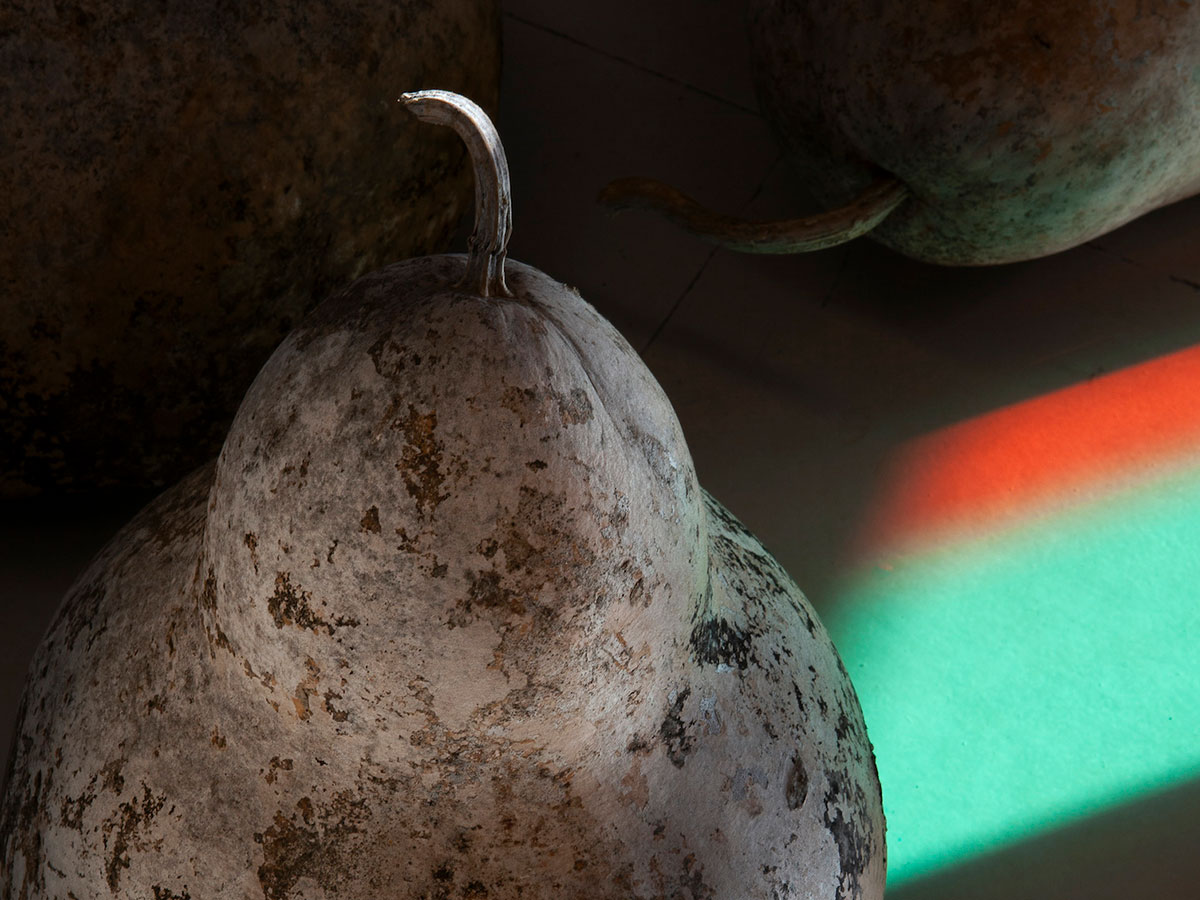
Andrea Sala, studio per Zucca essiccata, 2024. Ph. Daniele Signaroldi.
DATE:
March 2 – June 30, 2024
INFO:
Friday-Sunday:
10.30am-7.30pm
Upon reservation for
schools and groups
Free entry
DOWNLOAD:
SHARE:
Extraordinary openings of the exhibitions also on Easter Sunday and on the occasion of the holidays on April 25th and May 1st.
Book the free exhibition visit with the Art director.
Curated by Paola Nicolin
The third instalment of a series of exhibitions highlighting lesser-known pieces from Piacenza’s museum collections engages artist Andrea Sala in a dialogue with liturgical objects and furnishing from the collection of the Diocese of Piacenza-Bobbio.
XNL Piacenza, the hub for contemporary art, cinema, theatre, and music by the Fondazione di Piacenza e Vigevano, is delighted to unveil Sul Guardare Atto 3 / Andrea Sala (Ways of Seeing Act 3 / Andrea Sala), in collaboration with the office for the Ecclesiastical Cultural Heritage of the Diocese of Piacenza-Bobbio, the third act of the series Sul Guardare (Ways of Seeing) commenced in September 2023 with an exhibition featuring Massimo Grimaldi in dialogue with the Ricci Oddi Modern Art Gallery.
Loosely inspired by the television series of the same name created by John Berger in 1971 for the BBC, the project aims to reinterpret the artistic heritage of the city and its surrounding region, navigating the realms of tradition and innovation, engaging it in a dialogue with the works of contemporary artists.
In the third act of the series, curated by XNL Arte director Paola Nicolin, the spotlight falls on Andrea Sala (Como, 1976), an Italian artist whose professional journey spans between Italy and Canada. Sala’s sculptures are imbued with his interest in design culture and process research, which stems from a fascination with fragile materials, such as terracotta and ceramics. His artistic research, inspired by traditional aesthetics and the avant-garde movements of the 19th century, particularly in the fields of Design, Architecture and Visual Arts in general, finds fulfilment in the minimalism of forms and the use of traditional techniques applied to industrial materials, or vice versa. Sala work is heavily influenced by his choice of materials, which depends on their inherent qualities that evolve throughout the manufacturing process.
In the halls of XNL, Sala presents a unique interpretation of select liturgical objects and furnishings sourced from the deposits and collections of the bishop’s palace in Piacenza.
The artist’s first solo exhibition in an Italian institution emerges from his exploration of the museum’s repositories. Through a collaboration facilitated by Director Manuel Ferrari, Sala gained access to a concealed segment of the heritage comprising small yet evocative objects. One of the objectives of the project was to facilitate the residency of a contemporary artist in the city. This allowed for the selection of objects to become a personal and subjective choice, revealing not just a story but also an emotional response to materials, forms, and the potential for contemporary reinterpretation of ritual objects. With a keen sensitivity to the poetics of materials and presentation, Sala selected cases, liturgical vestments, monstrances, goblets, candle holders, reorganized them in a new framework, altering their perspective, and accompanied them with a series of new ceramic sculptures and drawings created specifically for this occasion.
Once crafted to enshroud and safeguard the sacred, these furnishings now rest on the ground, inviting viewers to observe them up close and unveiling their simple beauty of form and materials in a new light.
“This project”, explains Andrea Sala “is important because it required me to engage in something that is consistently part of my artistic work. My interest lies in engaging the audience in a mechanism that reinterprets specific cultural and linguistic structures – in this instance, rituals, symbols, and sacred objects – by mixing them with alternative forms, functions, and meanings.”
The theme of the exhibition is a contemplation on the case and what it contains, whether it be a garment, a box, a blanket, or a body.
Sala’s fascination with forms remains a consistent theme in his work. The artist contemplates shapes, materials, and colours, providing a perspective on objects that, stripped of religious significance, prompt reflection on the container to better understand the content. These perfect shapes, balanced between abstractionism and anthropomorphism, serve as a “vessels of the sacred” while also narrating stories of journeys, rituals, solitude, and intimacy, but also of multitudes in procession, peace and wars, conversions and submissions, pomp and poverty, life, and death.
“This approach”, the artist explains “enables me to transcend the primary source of inspiration and create pieces that are ‘tainted’ by a plethora of influences. I persist in exploring the realm of industrial products, where the functionality of objects gradually diminishes as a result of the detached nature of the artistic process. But I am also intrigued by humanity’s approach to living spaces and its relationship with objects. Throughout the years, my meticulous and thorough examination of the world of objects has enabled me to develop a personal lexicon of shapes that progressively diverge from their original references, and yet remain somewhat recognizable, albeit in a distorted manner.”
Aligned with the ethos of XNL Arte as a museum-school deeply committed to knowledge dissemination, Andrea Sala contributed to the development, organization, or implementation of a program or artist workshops that are part of the PCTO (Curricular Path of Transversal Skills and Orientation) and the exhibition includes an educational program tailored for primary and secondary schools, along with a series of three performance actions curated by Nicola Ratti, a musician and sound designer known for his interest in experimenting with analogue music and sound installations. The exhibition itself, envisioned as a vast enclosure for the showcased works, will feature, even during its opening, a series of interventions that relate to the displayed objects, enhancing their narrative impact in a contemporary context.
The digital series “Voci su / Voices on” also continues featuring Andrea Sala. Launched during Massimo Grimaldi’s exhibition and conceived as a dive into the artist’s journey, this editorial project tailored for XNL Arte’s social platforms, focuses on the artists featured in the exhibition and the communities connected to them.
Ways of Seeing Act 3 continues the series focusing on the exploration of image, which commenced with Massimo Grimaldi’s exhibition in conversation with pieces from the Ricci Oddi Modern Art Gallery, with the aim of appreciating historical contexts and events in connection with present-day topics and concerns.
XNL Arte programme is supported by Rete Cultura Piacenza, which includes the Fondazione of Piacenza and Vigevano, the Municipality of Piacenza, the Province of Piacenza, the Emilia-Romagna Region, the Chamber of Commerce of Emilia, and the Diocese of Piacenza-Bobbio.
Public program
simbolo/voce/corpo (symbol/voice/body), a series of performance actions curated by LL
A sequence of three performance actions curated by the cultural production and design platform LL, and titled simbolo/voce/corpo (symbol/voice/body), will punctuate the whole duration of the exhibition Ways of Seeing, Act 3°. Andrea Sala.
The three works by Miranda Secondari, Alessandro Bosetti, and Enrico Malatesta incorporate a contemplation on the transference of symbols into varied contexts, the shift in meaning of the voice as a detached element from the body, extending to the body itself as a vessel, a covering enveloping silence. Through this series of works, which occupy the exhibition space with both affirmation and mimicry, without overwhelming or imposing themselves as excess, visitors, also acting as spectators, are provided with a comprehensive experience of both the physical environment and its conceptual content. The performances are presented by LL, a cultural production and design platform founded by Nicola Ratti, Roberta Pagani, and Marco Paltrinieri.
Actions
Caveja
08.03.2024, H. 18.30
Enrico Malatesta’s Caveja is a sound performance entered around an instrument from the peasant tradition of Romagna, known as the caveja, which has transcended its practical purpose and is now associated with deeper cultural and spiritual meanings in the context of rituals and ceremonies.
The caveja, along with other sound objects, forms the instrumentation that Malatesta uses to craft a disseminated landscape of events throughout the room. The aim of the performance is to draw the visitors’ attention the small changes and fluctuations in the sound scape (the combination of sounds in the environment) that surrounds them.
Plane/Talea
21.04.2024, H 18.30 (TBC – info on xnlpiacenza.it)
Alessandro Bosetti’s Plane/Talea is a sound performance that uses the human voice as its sole compositional material. This voice is stripped of its personal identity and physical presence, becoming a disembodied entity devoid of its usual vessel. It represents the culmination of years of archival work. The performance inhabits the exhibition space, but it deviates from the conventional presentation format by spreading out both the audience and the sources of sound across a larger area, breaking away from the usual centralized setup.
L’Assente (The Absent)
28.06.2024, H 18.30 (TBC – info on xnlpiacenza.it)
L’Assente by Miranda Secondari is a solo dance piece that explores the concept of absence as a moment of pause, depicted through deliberate and carefully timed movements. Throughout the performance, unexpected imagery, subtle ambiguities between movement and sculpture, as well as moments of silence and sound events, are revealed. Miranda Secondari presents L’Assente following a brief preparatory residency in the exhibition spaces.
Andrea Sala
Born in Como in1976, Andrea Sala lives and works in Milan, where he graduated from the Brera Academy of Fine Arts. Sala’s artistic research, inspired by traditional aesthetics and the avant-garde movements of the 19th century, particularly in the fields of Design, Architecture and Visual Arts in general, finds fulfilment in the minimalism of forms and the use of traditional techniques applied to industrial materials, or vice versa. The choice of materials plays a central role in Sala’s practice: the artist selects them on the basis of the intrinsic peculiarities of the material, which changes during all phases of the production process. Observed closely, explored in its making, it is like a tale, composed of pieces to be put together, as enigmatic as it is evident and manifest as the history of our material culture. This approach allows for transcending the original source’s completeness, creating space for works increasingly influenced by diverse factors. Sala delves into the realm of industrial goods, where the objects’ functionality gradually diminishes due to the decontextualizing effect of the artistic process. With meticulous care and obsessive scrupulousness, he dissects the world of objects, transforming them into a personal alphabet that underpins a creative process always in search of its own rationale.
His works have gained international attention and have been exhibited in various venues, including the Venice Biennale of Architecture (2004), MAMCO, Museum of Modern and Contemporary Art in Geneva (2003), MACO, Museum of Contemporary Art in Oaxaca (2007), Kaleidoscope Project Space in Milan (2010), Maison Rouge in Paris (2012), the Joliette Museum of Art (2012) and the Guido Molinari Foundation in Montréal (2012). His works are in the collection of MAXXI – Museo Nazionale delle Arti del XXI secolo, Rome, at the Banca Albertini Syz in Milan and in private collections. Some of his works were exhibited at the last Milan Triennale.
